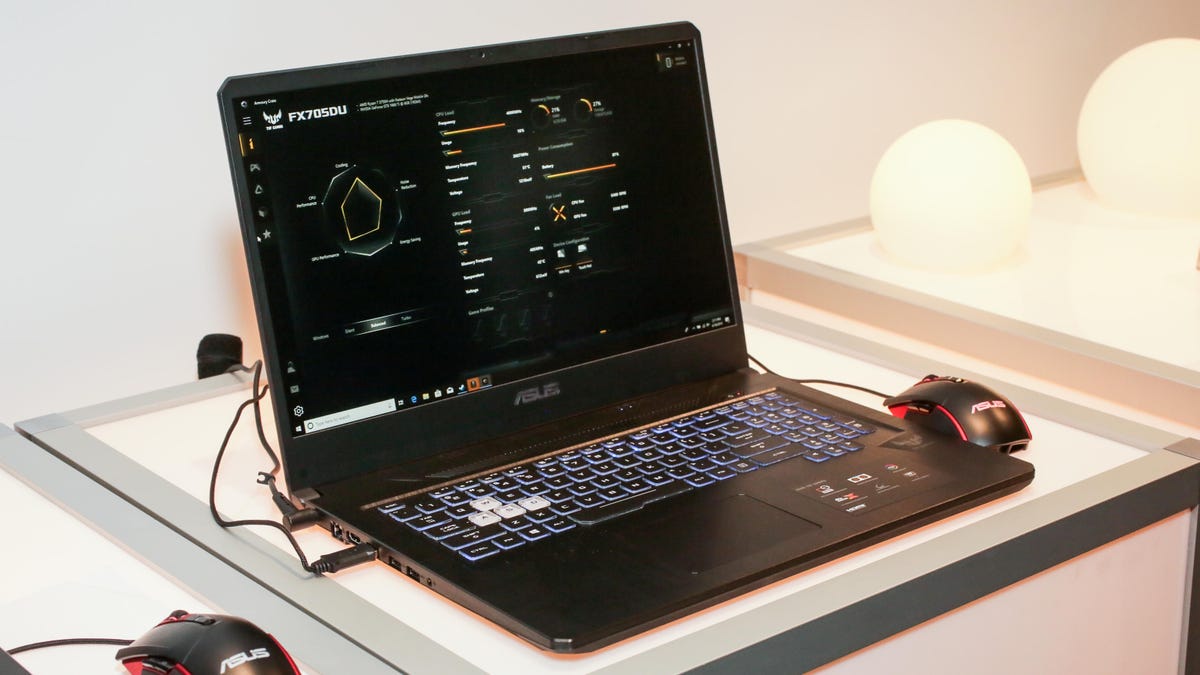Nvidia GeForce GTX 1660 Ti mobile, 1650 are the new cheap gaming graphics
They may not have ray tracing cores, but they do bring faster computation to your 1080p gameplay. Which is really what most people want, anyway.

The Asus TUF FX705, one of the new laptops which incorporates the GTX 1650 and GTX 1660 Ti.
Nvidia has now squished its budget-friendly GeForce GTX 1660 Ti graphics card into the latest laptops , along with the lower-end GTX 1650, which debuted Tuesday in both desktop and mobile incarnations.
While the desktop GTX 1650 will cost you in the pleasant neighborhood of $150, it's also a replacement for the GTX 1050 in spirit (though should be about the same as the 1050 Ti in practice) with a moderate increase in speed, which means it won't even reach reasonably playable VR performance.
The Turing architecture in both GPUs bring faster processing than their Pascal predecessors and Nvidia says they're more power efficient as well.
Comparative specifications
| GeForce GTX 1650 | GeForce GTX 1050 | |
|---|---|---|
| CUDA cores | 1,024 | 640 |
| Base clock (MHz) | 1,020 to 1,395 | 1,354 |
| Boost clock (MHz) | 1,245 to 1,560 | 1,493 |
| Total Graphics Power (watts) | 35-50 | 40-50 |
| Memory speed (Gbps) | Up to 8 | 7 |
| Memory | 4GB GDDR5 | 4GB GDDR5 |
| Memory interface | 128 bit | 128 bit |
| Memory bandwidth (GB/sec) | 128 | 128 |
Like its desktop version, the 1660 Ti sounds like a compelling performance sweet spot -- Nvidia claims 100-plus frames per second at 1080p for the most popular competitive games (like, you know, Fortnite), which leaves some room for it to deliver reasonable performance on more graphically intensive games at 1080p.
Unfortunately, the GTX 1650 is what you'll find in laptops at the price sweet spot -- less than $1,000. And it's not quite as compelling a buy. If Nvidia's claim of 60-plus fps for 1080p high-quality on those same games is accurate, then chances are performance will fall well below that on many other games and force quality compromises.
That's fine, in general. After all, you get what you pay for, and in a desktop, you can alway swap it out for something better. But if the company's claim that 75% of the GeForce installed base has GTX 960M (Maxwell) or earlier GPUs and Intel's claim that the average laptop is three years old are both correct, you have to ask yourself if the GTX 1650 is the investment that's going to last you for the next three-plus years as games get even more GPU intensive.
Also, "faster" is not necessarily "fast enough." As an example, the GTX 1050-based Asus TUF laptop we reviewed almost a year ago benchmarked at 31.2 fps using Deus Ex: Mankind Divided, which is slow. If, as Nvidia says, the GTX 1650 hits a 1.7x improvement over the 1050, that would work out to about 53 fps, which still isn't the smooth 60 we're looking for and certainly not what will take you into the future. (Sadly, we don't have any other relevant game benchmark results for that laptop, and have only tested 1050 Ti models since then.)
Correction, 6:55 a.m. PT: Corrects base- and boost-clock speeds in the chart for the GTX 1650, which had been swapped.

